Language: R. Question: Can I specify fixed width font for the menu(..,graphics=T) function?
Explanation:
I recently asked this question on how to have a user select a row of a data frame interactively:
df <- data.frame(a=c(9,10),b=c('hello','bananas'))
df.text <- apply( df, 1, paste, collapse=" | " )
menu(df.text,graphics=T)

I'd like the | to line up. They don't at the moment; fair enough, I haven't padded out the columns to the same width. So I use format to get every column to the same width (later I'll write code to automagically determine the width per column, but let's ignore that for now):
df.padded <- apply(df,2,format,width=8)
df.padded.text <- apply( df.padded, 1, paste, collapse=" | ")
menu( df.padded.text,graphics=T )

See how it's still wonky? Yet, if I look at df.padded, I get:
> df.padded
a b
[1,] " 9 " "hello "
[2,] "10 " "bananas "
So each cell is definitely padded out to the same length.
The reason for this is probably because the default font for this (on my system anyway, Linux) is not fixed width.
So my question is:
Can I specify fixed width font for the menu(..,graphics=T) function?
Update
@RichieCotton noticed that if you look at menu with graphics=T it calls select.list, which in turn calls tcltk::tk_select.list.
So it looks like I'll have to modify tcltk options for this. From @jverzani:
library(tcltk)
tcl("option", "add", "*Listbox.font", "courier 10")
menu(df.padded.text,graphics=T)

Given that menu(...,graphics=T) calls tcltk::tk_select.list when graphics is TRUE, my guess is that this is a viable option, as any distro that would be capable of displaying the graphical menu in the first place would also have tcltk on it, since it needs to call tk_select.list.
(As an aside, I can't find anything in the documentation that would give me the hint to try tcl('option','add',...), let alone that the option was called *Listbox.font!)
Another update -- had a closer look at the select.list and menu code, and it turns out on Windows (or if .Platform$GUI=='AQUA' -- is that Mac?), the tcltk::tk_select.list isn't called at all, and it's just some internal code instead. So modifying '*Listbox.font' won't affect this.
I guess I'll just:
- if tcltk is there, load it, set the *Listbox.font to courier, and use
tcltk::tk_select.listexplicitly - if it isn't there, try
menu(...,graphics=T)to at least get a graphical interface (which won't be monospace, but is better than nothing) - if that fails too, then just fallback to
menu(...,graphics=F), which will definitely work.
Thanks all.